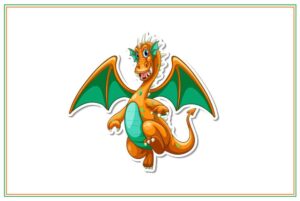The Winning Combination: Traditional And Digital Marketing Strategies

Image source: Dreamstime Stock Photos
In this rapidly evolving digital age, marketing has become more challenging than ever before. With consumers being bombarded by advertisements at every turn, businesses are constantly looking for innovative ways to cut through the noise and stand out from the competition. While digital marketing has emerged as a powerful tool, traditional marketing techniques still hold weight in the modern landscape. In fact, a combination of both traditional and digital marketing strategies can be a winning formula for any business. In this article, we will explore the numerous benefits of combining these two approaches and how they can work together harmoniously to drive business success.
1. Expanding Reach and Reaching Diverse Demographics
One of the primary benefits of combining traditional and digital marketing strategies is the ability to expand your brand’s reach and target a wider audience. Traditional marketing channels like print media, television, and radio still hold significant influence, especially for reaching older demographics who may not be as digitally inclined. By utilizing traditional marketing methods, businesses can tap into these audience segments and expand their reach beyond the digital sphere.
On the other hand, digital marketing strategies have the power to reach a global audience efficiently and cost-effectively. With the increasing number of internet users, social media platforms, and search engine optimization, businesses can penetrate new markets, attract younger demographics, and engage with a broader audience. By integrating traditional and digital strategies, businesses can benefit from the best of both worlds and connect with a diverse range of potential customers, maximizing their reach and ensuring a strong brand presence.
2. Creating a Consistent Brand Identity
Combining traditional and digital marketing strategies allows businesses to create a consistent brand identity across various platforms. While traditional marketing techniques often focus on tangible forms of advertising, such as print ads, billboards, and banners, digital marketing emphasizes online presence and interaction. By blending these two approaches, businesses can maintain a cohesive brand image that resonates with consumers across all marketing channels.
For example, a company may advertise a new product through a traditional television commercial, which can then direct viewers to a dedicated landing page or social media accounts for more information. This seamless integration between traditional and digital allows businesses to develop a consistent message, visual aesthetic, and brand tone that resonates with customers regardless of the channel they engage with. The result is a stronger brand identity, increased brand recognition, and enhanced customer loyalty.
3. Amplifying Engagement and Generating Measurable Results
Traditional marketing often relies on one-way communication, where businesses push their messages to consumers through various channels. Digital marketing, on the other hand, facilitates two-way communication, allowing businesses to engage in meaningful conversations with customers, receive feedback, and gain valuable insights. When combined, these approaches create a comprehensive marketing strategy that amplifies engagement and generates measurable results.
For instance, incorporating digital marketing techniques such as social media ads or email campaigns can complement a traditional marketing campaign, encouraging customers to interact with the brand online, leave reviews, share their experiences, and foster a sense of community. This increased engagement not only helps businesses build strong relationships with their customers but also provides valuable data that can be analyzed to measure the success of a marketing campaign. With digital tools like analytics and tracking, businesses can assess key metrics such as website traffic, conversion rates, and customer interactions, allowing for real-time adjustments and continuous improvement.
4. Cost-Effectiveness and Return on Investment
A major advantage of digital marketing is its cost-effectiveness compared to traditional marketing methods. Traditional marketing channels, such as television ads or print media, can be expensive, limiting smaller businesses with limited budgets. Digital marketing, on the other hand, offers affordable options like social media advertising, email marketing, and content creation, which can be tailored to fit any budget.
By combining traditional and digital marketing strategies, businesses can strike a balance between cost-effectiveness and wider brand exposure. Traditional marketing can be strategic, focusing on niche markets or specific geographic areas, while digital marketing can cover a broader spectrum in a more targeted manner. This combination allows businesses to optimize marketing budgets and achieve a higher return on investment (ROI).
In today’s fast-paced business landscape, where technology is continuously reshaping marketing practices, it is crucial for businesses to embrace a holistic approach that combines the strengths of traditional and digital strategies. By expanding reach, creating a consistent brand identity, amplifying engagement, and optimizing costs, businesses can enjoy the best of both worlds and drive meaningful results. The key lies in understanding the target audience, identifying the right marketing mix, and utilizing the plethora of tools available to cultivate a marketing strategy that stands out in a crowded marketplace. So, rather than choosing one over the other, embrace the power of combining traditional and digital marketing strategies to unlock the full potential of your business in today’s dynamic marketing landscape.






